-

Aug
21
Interpretive Summary: Impacts of heat stress on growth performance and its mitigation in small ruminants

Small ruminants have been amongst the first farm animals to be domesticated by humans. Primarily, these animals are raised for meat, milk and skin ensuring global food security in addition to providing draught power and financial services. Small ruminants are highly valued for their versatility and excellent adaptability to varied geographical and climatic conditions as evident from their wide distribution pattern in Asian and African continents with rough climatic conditions.
Read more
-

Aug
21
Interpretive Summary: Impacts of stress on growth and reproductive development of beef heifers

The success of cow-calf operations is fundamentally tied to the performance and management of beef females, as they are expected to maintain estrous cyclicity and produce one calf per cow annually. A combination of factors, including nutrition and management practices, affect reproductive success in cattle, and therefore overall fertility and herd performance.
Read more
-

Aug
21
Interpretive Summary: Charting a course on the effects of ocean and sea transportation stress on cattle and sheep body weight changes, behavior, and nutrient mobilization

Transportation is a necessary part of ruminant livestock production, with most animals being transported at least once in their lifetime, if not more frequently. Livestock are transported for a variety of reasons, including growing and finishing, harvesting, acquiring new genetics, and show purposes. However, transportation can be a potential stressor for livestock that can impact skeletal muscle, growth, and meat quality (Dalmau et al., 2013; Deters and Hansen, 2022).
Read more
-

Aug
21
Interpretive Summary: Factors contributing to differences in stress resilience and growth performance between Bos taurus and Bos indicus cattle

As the world population is projected to increase to 9.15 billion by 2050, demand for agricultural products is expected to increase 60% (Alexandratos and Bruinsma, 2012). Current cattle production practices will not meet increasing demand. The U.S. primarily produces Bos taurus cattle and ranks first in beef exports worldwide, accounting for 20% of the world supply (Colditz and Hine, 2016; Scheffler, 2022; USDA, 2024).
Read more
-

Aug
21
Interpretive Summary: Plant tannin for grazing ruminant growth
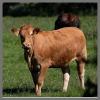
Tannins have long been used to preserve and tan leather. There are reports of tannin use dating back to the late Neolithic period (Falcão and Araujo, 2018), when aqueous extracts with plant parts were used to prevent the degradation of slaughtered animal skins, transforming them into leather.
Read more
-

Aug
20
The Giving Herd - ASAS Foundation Newsletter - August 2025
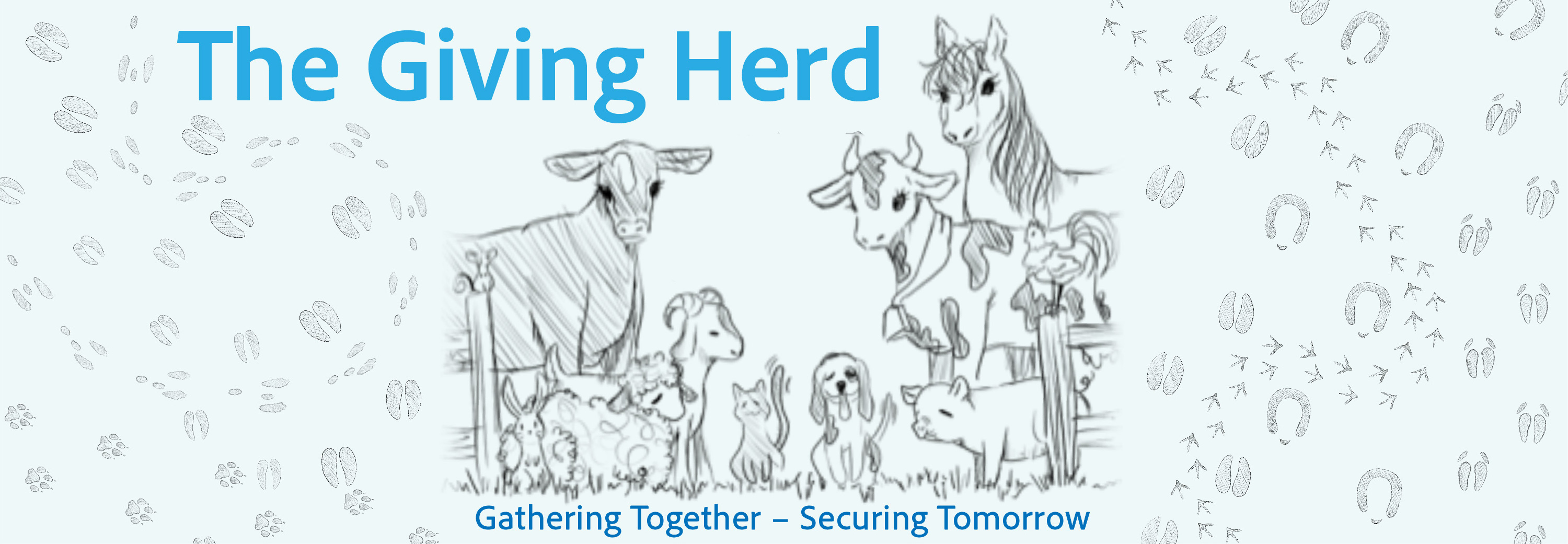
The August Edition of The Giving Herd, an ASAS Foundation Newsletter
Read more
-

Aug
19
A Life Bridging Animal and Human Science - Teresa A. Davis' Story

A Life Bridging Animal and Human Science - Teresa A. Davis' Story
Read more
-

Aug
14
Interpretive Summary: Effect of precision feeding standardized ileal digestible lysine and other amino acids to lactating sows compared to conventional feeding strategies in a commercial farm
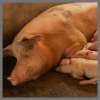
Sows are usually fed a single diet during lactation regardless of factors that affect nutrient requirements such as parity, milk production, and litter growth rate. Precision feeding through diet blending can be used to target an individual sow’s nutrient requirement and decrease diet costs compared to traditional feeding strategies.
Read more
-

Aug
14
Interpretive Summary: Effects of 25-hydroxycholecalciferol supplementation during gestation on sow performance, offspring development, and intestinal microbiota in sows and piglets
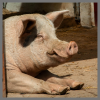
Vitamin D (VD) plays an important role in bone mineralization and animal reproductive performance. As a metabolite of VD in the liver, 25-hydroxycholecalciferol (25OHD3) is gradually becoming a substitute for VD3. However, reported effects of administering 25OHD3 to sow diet instead of VD3 are inconsistent.
Read more
-

Aug
14
Interpretive Summary: In vitro fermentation characteristics of acacia fiber using feline fecal inoculum

Acacia fiber is a soluble dietary fiber derived from the gum exudate of acacia trees. This fiber is commonly used in the pet food industry as a gelling and emulsifying agent, though its effects on feline gastrointestinal health are not well understood. The current experiment used a batch in vitro system and feline fecal inoculum to mimic the colonic bacterial fermentation process and assess the fermentation characteristics of an acacia fiber blend, inulin, pectin (positive control), and cellulose (negative control).
Read more
-

Aug
14
Interpretive Summary: Maternal supplementation of a Bacillus-based direct-fed microbials altered the cow prepartum plasma metabolome and the calf plasma metabolome before and after vaccination
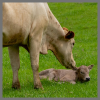
Direct-fed microbials (DFM), such as Bacillus spp., can enhance digestion and support the immune function of cattle. Nutritional management of beef cows during gestation and early lactation may enhance future offspring performance by multiple mechanisms, including modifying maternal and offspring blood metabolites.
Read more
-

Aug
14
Interpretive Summary: Relative bioavailability of 25-hydroxycholecalciferol vs. cholecalciferol and vitamin D3 requirements in White Pekin ducks from 15 to 42 d of age

Vitamin D3 (VD3) is essential for calcium and phosphorus absorption and bone development. However, endogenous synthesis of VD3 in poultry is insufficient to meet growth requirements, necessitating dietary supplementation. NRC (1994) recommended VD3 requirements for both starter and growing White Pekin ducks were 400 IU/kg. With the increasing growth rate of meat ducks, NRC recommendations may be inadequate for the growth of modern meat ducks.
Read more
-

Aug
14
Interpretive Summary: Unraveling factors influencing the variability and repeatability of greenhouse gases measured through an automated head chamber system in grazing cattle in commercial conditions
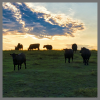
Accurate measurements of enteric methane emissions are becoming increasingly relevant to cattle production. This study evaluated how environmental, animal, and equipment factors influence enteric emissions and their repeatability over time when measured through automated head chamber system devices.
Read more
-

Aug
07
Interpretive Summary: ASAS-NANP SYMPOSIUM: Mathematical Modeling in Animal Nutrition: Training the Future Generation in Data and Predictive Analytics for Sustainable Development. A Summary of the 2023 Symposium
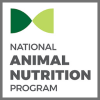
Mathematical modeling and data analytics are two critical components for achieving sustainability in livestock production. While scientific knowledge remains the most crucial step in model-building (Tedeschi, 2023), educating and training students and researchers in modeling techniques are essential first steps to developing the necessary discipline and skills for successful mathematical model development (Ellis et al., 2020; Tedeschi, 2019). Due to limited opportunities for students and researchers to understand the underlying principles of mathematical modeling, the Modeling Committee of the National Animal Nutrition Program (NANP; https://animalnutrition.org) was tasked with enhancing modeling skills for future generations in animal science programs by providing training venues for quantitative and qualitative modeling approaches to data and predictive analytics.
Read more
-

Aug
07
Interpretive Summary: Assessing the effects of supplementation with a Saccharomyces cerevisiae fermentation-derived postbiotic on methane production, ruminal fermentation, and nutrient utilization in beef cattle
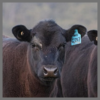
Rumen fluid from 6 cannulated Angus crossbred steers (experimental unit) was utilized to assess CH4 production and other ruminal fermentation parameters, such as gas production, pH, concentration of volatile fatty acids (VFA) and ammonia nitrogen, and in vitro organic matter digestibility under controlled laboratory conditions via the ex vivo model. To determine the effects of SCFP supplementation in vivo, rumen fluid from each steer was collected over a 24 h period to evaluate the dynamics of ruminal fermentation, and feed and fecal samples were collected to estimate the in vivo apparent total tract digestibility of nutrients.
Read more
-

Aug
07
Interpretive Summary: The effects of supplemental brewers yeast on postprandial amino acid concentrations in healthy adult sled dogs

Yeast is well known for its immunomodulating and gut stimulating effects, but its effects on postprandial amino acid (AA) absorption in dogs has not been measured. This study used 20 dogs allocated to 1 of 2 dietary treatment groups. Treatment dogs received the yeast supplement for 10 wk, and control dogs no supplement.
Read more
-

Aug
07
Interpretive Summary: Amino acid digestibility of yellow mealworm-based ingredients using the precision-fed cecectomized rooster assay
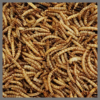
Mealworms serve as an alternative protein source for pet food. Because the amino acid (AA) content and protein quality of yellow mealworm-based ingredients may vary depending on their husbandry, harvest, and processing procedures, testing of each is required. Our objective was to measure the AA composition, AA digestibility, and protein quality of the following ingredients using the precision-fed cecectomized rooster assay: 1) defatted yellow mealworm (Tenebrio molitor) flour without cuticles (TM); 2) defatted yellow mealworm flour with cuticles (TMc); and 3) whole yellow mealworm pulp (TMp).
Read more
-

Aug
07
Interpretive Summary: Stress responses of horses transported long-distance by road to and from a jumping competition in a tropical climate

The rising popularity of equestrian sports has led to an increased demand for road transport to competitions. Research conducted in temperate climates indicates that this transport can be stressful for horses. A study in tropical climates discovered that horses experienced heightened acute stress during the initial loading and at the onset of unloading during the outbound journey, whereas increased stress was noted only during the initial loading in the inbound journey.
Read more
-

Aug
07
Interpretive Summary: The impact of excess liver copper concentrations on response to a bovine respiratory disease challenge in lightweight beef-on-dairy crossbred steers
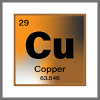
The integration of beef-on-dairy crossbred calves into feedlots remains a challenge due to their heightened susceptibility to disease. Calves raised on commercial dairies are commonly exposed to greater amounts of copper than calves raised in conventional beef production systems, which may contribute to increased inflammation and immune dysfunction.
Read more
-

Jul
31
Washington Roundup - July 2025
.png?sfvrsn=27e85ad1_1)
On July 24th, Secretary of Agriculture Brooke Rollins released Secretary Memorandum: SM 1078-015 which outlines the Department of Agriculture’s Reorganization Plan. Secretary Rollins had indicated such a plan was being developed earlier in the year. While NIFA and ERS were relocated during the first Trump administration, it is expected that the changes will impact all of USDA’s research agencies.
Read more
 AugInterpretive Summary: Impacts of heat stress on growth performance and its mitigation in small ruminants
AugInterpretive Summary: Impacts of heat stress on growth performance and its mitigation in small ruminants Small ruminants have been amongst the first farm animals to be domesticated by humans. Primarily, these animals are raised for meat, milk and skin ensuring global food security in addition to providing draught power and financial services. Small ruminants are highly valued for their versatility and excellent adaptability to varied geographical and climatic conditions as evident from their wide distribution pattern in Asian and African continents with rough climatic conditions.
Small ruminants have been amongst the first farm animals to be domesticated by humans. Primarily, these animals are raised for meat, milk and skin ensuring global food security in addition to providing draught power and financial services. Small ruminants are highly valued for their versatility and excellent adaptability to varied geographical and climatic conditions as evident from their wide distribution pattern in Asian and African continents with rough climatic conditions. AugInterpretive Summary: Impacts of stress on growth and reproductive development of beef heifers
AugInterpretive Summary: Impacts of stress on growth and reproductive development of beef heifers The success of cow-calf operations is fundamentally tied to the performance and management of beef females, as they are expected to maintain estrous cyclicity and produce one calf per cow annually. A combination of factors, including nutrition and management practices, affect reproductive success in cattle, and therefore overall fertility and herd performance.
The success of cow-calf operations is fundamentally tied to the performance and management of beef females, as they are expected to maintain estrous cyclicity and produce one calf per cow annually. A combination of factors, including nutrition and management practices, affect reproductive success in cattle, and therefore overall fertility and herd performance. AugInterpretive Summary: Charting a course on the effects of ocean and sea transportation stress on cattle and sheep body weight changes, behavior, and nutrient mobilization
AugInterpretive Summary: Charting a course on the effects of ocean and sea transportation stress on cattle and sheep body weight changes, behavior, and nutrient mobilization Transportation is a necessary part of ruminant livestock production, with most animals being transported at least once in their lifetime, if not more frequently. Livestock are transported for a variety of reasons, including growing and finishing, harvesting, acquiring new genetics, and show purposes. However, transportation can be a potential stressor for livestock that can impact skeletal muscle, growth, and meat quality (Dalmau et al., 2013; Deters and Hansen, 2022).
Transportation is a necessary part of ruminant livestock production, with most animals being transported at least once in their lifetime, if not more frequently. Livestock are transported for a variety of reasons, including growing and finishing, harvesting, acquiring new genetics, and show purposes. However, transportation can be a potential stressor for livestock that can impact skeletal muscle, growth, and meat quality (Dalmau et al., 2013; Deters and Hansen, 2022). AugInterpretive Summary: Factors contributing to differences in stress resilience and growth performance between Bos taurus and Bos indicus cattle
AugInterpretive Summary: Factors contributing to differences in stress resilience and growth performance between Bos taurus and Bos indicus cattle As the world population is projected to increase to 9.15 billion by 2050, demand for agricultural products is expected to increase 60% (Alexandratos and Bruinsma, 2012). Current cattle production practices will not meet increasing demand. The U.S. primarily produces Bos taurus cattle and ranks first in beef exports worldwide, accounting for 20% of the world supply (Colditz and Hine, 2016; Scheffler, 2022; USDA, 2024).
As the world population is projected to increase to 9.15 billion by 2050, demand for agricultural products is expected to increase 60% (Alexandratos and Bruinsma, 2012). Current cattle production practices will not meet increasing demand. The U.S. primarily produces Bos taurus cattle and ranks first in beef exports worldwide, accounting for 20% of the world supply (Colditz and Hine, 2016; Scheffler, 2022; USDA, 2024). AugInterpretive Summary: Plant tannin for grazing ruminant growth
AugInterpretive Summary: Plant tannin for grazing ruminant growth Tannins have long been used to preserve and tan leather. There are reports of tannin use dating back to the late Neolithic period (Falcão and Araujo, 2018), when aqueous extracts with plant parts were used to prevent the degradation of slaughtered animal skins, transforming them into leather.
Tannins have long been used to preserve and tan leather. There are reports of tannin use dating back to the late Neolithic period (Falcão and Araujo, 2018), when aqueous extracts with plant parts were used to prevent the degradation of slaughtered animal skins, transforming them into leather. AugThe Giving Herd - ASAS Foundation Newsletter - August 2025
AugThe Giving Herd - ASAS Foundation Newsletter - August 2025 The August Edition of The Giving Herd, an ASAS Foundation Newsletter
The August Edition of The Giving Herd, an ASAS Foundation Newsletter AugA Life Bridging Animal and Human Science - Teresa A. Davis' Story
AugA Life Bridging Animal and Human Science - Teresa A. Davis' Story A Life Bridging Animal and Human Science - Teresa A. Davis' Story
A Life Bridging Animal and Human Science - Teresa A. Davis' Story AugInterpretive Summary: Effect of precision feeding standardized ileal digestible lysine and other amino acids to lactating sows compared to conventional feeding strategies in a commercial farm
AugInterpretive Summary: Effect of precision feeding standardized ileal digestible lysine and other amino acids to lactating sows compared to conventional feeding strategies in a commercial farm Sows are usually fed a single diet during lactation regardless of factors that affect nutrient requirements such as parity, milk production, and litter growth rate. Precision feeding through diet blending can be used to target an individual sow’s nutrient requirement and decrease diet costs compared to traditional feeding strategies.
Sows are usually fed a single diet during lactation regardless of factors that affect nutrient requirements such as parity, milk production, and litter growth rate. Precision feeding through diet blending can be used to target an individual sow’s nutrient requirement and decrease diet costs compared to traditional feeding strategies. AugInterpretive Summary: Effects of 25-hydroxycholecalciferol supplementation during gestation on sow performance, offspring development, and intestinal microbiota in sows and piglets
AugInterpretive Summary: Effects of 25-hydroxycholecalciferol supplementation during gestation on sow performance, offspring development, and intestinal microbiota in sows and piglets Vitamin D (VD) plays an important role in bone mineralization and animal reproductive performance. As a metabolite of VD in the liver, 25-hydroxycholecalciferol (25OHD3) is gradually becoming a substitute for VD3. However, reported effects of administering 25OHD3 to sow diet instead of VD3 are inconsistent.
Vitamin D (VD) plays an important role in bone mineralization and animal reproductive performance. As a metabolite of VD in the liver, 25-hydroxycholecalciferol (25OHD3) is gradually becoming a substitute for VD3. However, reported effects of administering 25OHD3 to sow diet instead of VD3 are inconsistent. AugInterpretive Summary: In vitro fermentation characteristics of acacia fiber using feline fecal inoculum
AugInterpretive Summary: In vitro fermentation characteristics of acacia fiber using feline fecal inoculum Acacia fiber is a soluble dietary fiber derived from the gum exudate of acacia trees. This fiber is commonly used in the pet food industry as a gelling and emulsifying agent, though its effects on feline gastrointestinal health are not well understood. The current experiment used a batch in vitro system and feline fecal inoculum to mimic the colonic bacterial fermentation process and assess the fermentation characteristics of an acacia fiber blend, inulin, pectin (positive control), and cellulose (negative control).
Acacia fiber is a soluble dietary fiber derived from the gum exudate of acacia trees. This fiber is commonly used in the pet food industry as a gelling and emulsifying agent, though its effects on feline gastrointestinal health are not well understood. The current experiment used a batch in vitro system and feline fecal inoculum to mimic the colonic bacterial fermentation process and assess the fermentation characteristics of an acacia fiber blend, inulin, pectin (positive control), and cellulose (negative control). AugInterpretive Summary: Maternal supplementation of a Bacillus-based direct-fed microbials altered the cow prepartum plasma metabolome and the calf plasma metabolome before and after vaccination
AugInterpretive Summary: Maternal supplementation of a Bacillus-based direct-fed microbials altered the cow prepartum plasma metabolome and the calf plasma metabolome before and after vaccination Direct-fed microbials (DFM), such as Bacillus spp., can enhance digestion and support the immune function of cattle. Nutritional management of beef cows during gestation and early lactation may enhance future offspring performance by multiple mechanisms, including modifying maternal and offspring blood metabolites.
Direct-fed microbials (DFM), such as Bacillus spp., can enhance digestion and support the immune function of cattle. Nutritional management of beef cows during gestation and early lactation may enhance future offspring performance by multiple mechanisms, including modifying maternal and offspring blood metabolites. AugInterpretive Summary: Relative bioavailability of 25-hydroxycholecalciferol vs. cholecalciferol and vitamin D3 requirements in White Pekin ducks from 15 to 42 d of age
AugInterpretive Summary: Relative bioavailability of 25-hydroxycholecalciferol vs. cholecalciferol and vitamin D3 requirements in White Pekin ducks from 15 to 42 d of age Vitamin D3 (VD3) is essential for calcium and phosphorus absorption and bone development. However, endogenous synthesis of VD3 in poultry is insufficient to meet growth requirements, necessitating dietary supplementation. NRC (1994) recommended VD3 requirements for both starter and growing White Pekin ducks were 400 IU/kg. With the increasing growth rate of meat ducks, NRC recommendations may be inadequate for the growth of modern meat ducks.
Vitamin D3 (VD3) is essential for calcium and phosphorus absorption and bone development. However, endogenous synthesis of VD3 in poultry is insufficient to meet growth requirements, necessitating dietary supplementation. NRC (1994) recommended VD3 requirements for both starter and growing White Pekin ducks were 400 IU/kg. With the increasing growth rate of meat ducks, NRC recommendations may be inadequate for the growth of modern meat ducks. AugInterpretive Summary: Unraveling factors influencing the variability and repeatability of greenhouse gases measured through an automated head chamber system in grazing cattle in commercial conditions
AugInterpretive Summary: Unraveling factors influencing the variability and repeatability of greenhouse gases measured through an automated head chamber system in grazing cattle in commercial conditions Accurate measurements of enteric methane emissions are becoming increasingly relevant to cattle production. This study evaluated how environmental, animal, and equipment factors influence enteric emissions and their repeatability over time when measured through automated head chamber system devices.
Accurate measurements of enteric methane emissions are becoming increasingly relevant to cattle production. This study evaluated how environmental, animal, and equipment factors influence enteric emissions and their repeatability over time when measured through automated head chamber system devices. AugInterpretive Summary: ASAS-NANP SYMPOSIUM: Mathematical Modeling in Animal Nutrition: Training the Future Generation in Data and Predictive Analytics for Sustainable Development. A Summary of the 2023 Symposium
AugInterpretive Summary: ASAS-NANP SYMPOSIUM: Mathematical Modeling in Animal Nutrition: Training the Future Generation in Data and Predictive Analytics for Sustainable Development. A Summary of the 2023 Symposium Mathematical modeling and data analytics are two critical components for achieving sustainability in livestock production. While scientific knowledge remains the most crucial step in model-building (Tedeschi, 2023), educating and training students and researchers in modeling techniques are essential first steps to developing the necessary discipline and skills for successful mathematical model development (Ellis et al., 2020; Tedeschi, 2019). Due to limited opportunities for students and researchers to understand the underlying principles of mathematical modeling, the Modeling Committee of the National Animal Nutrition Program (NANP; https://animalnutrition.org) was tasked with enhancing modeling skills for future generations in animal science programs by providing training venues for quantitative and qualitative modeling approaches to data and predictive analytics.
Mathematical modeling and data analytics are two critical components for achieving sustainability in livestock production. While scientific knowledge remains the most crucial step in model-building (Tedeschi, 2023), educating and training students and researchers in modeling techniques are essential first steps to developing the necessary discipline and skills for successful mathematical model development (Ellis et al., 2020; Tedeschi, 2019). Due to limited opportunities for students and researchers to understand the underlying principles of mathematical modeling, the Modeling Committee of the National Animal Nutrition Program (NANP; https://animalnutrition.org) was tasked with enhancing modeling skills for future generations in animal science programs by providing training venues for quantitative and qualitative modeling approaches to data and predictive analytics. AugInterpretive Summary: Assessing the effects of supplementation with a Saccharomyces cerevisiae fermentation-derived postbiotic on methane production, ruminal fermentation, and nutrient utilization in beef cattle
AugInterpretive Summary: Assessing the effects of supplementation with a Saccharomyces cerevisiae fermentation-derived postbiotic on methane production, ruminal fermentation, and nutrient utilization in beef cattle Rumen fluid from 6 cannulated Angus crossbred steers (experimental unit) was utilized to assess CH4 production and other ruminal fermentation parameters, such as gas production, pH, concentration of volatile fatty acids (VFA) and ammonia nitrogen, and in vitro organic matter digestibility under controlled laboratory conditions via the ex vivo model. To determine the effects of SCFP supplementation in vivo, rumen fluid from each steer was collected over a 24 h period to evaluate the dynamics of ruminal fermentation, and feed and fecal samples were collected to estimate the in vivo apparent total tract digestibility of nutrients.
Rumen fluid from 6 cannulated Angus crossbred steers (experimental unit) was utilized to assess CH4 production and other ruminal fermentation parameters, such as gas production, pH, concentration of volatile fatty acids (VFA) and ammonia nitrogen, and in vitro organic matter digestibility under controlled laboratory conditions via the ex vivo model. To determine the effects of SCFP supplementation in vivo, rumen fluid from each steer was collected over a 24 h period to evaluate the dynamics of ruminal fermentation, and feed and fecal samples were collected to estimate the in vivo apparent total tract digestibility of nutrients. AugInterpretive Summary: The effects of supplemental brewers yeast on postprandial amino acid concentrations in healthy adult sled dogs
AugInterpretive Summary: The effects of supplemental brewers yeast on postprandial amino acid concentrations in healthy adult sled dogs Yeast is well known for its immunomodulating and gut stimulating effects, but its effects on postprandial amino acid (AA) absorption in dogs has not been measured. This study used 20 dogs allocated to 1 of 2 dietary treatment groups. Treatment dogs received the yeast supplement for 10 wk, and control dogs no supplement.
Yeast is well known for its immunomodulating and gut stimulating effects, but its effects on postprandial amino acid (AA) absorption in dogs has not been measured. This study used 20 dogs allocated to 1 of 2 dietary treatment groups. Treatment dogs received the yeast supplement for 10 wk, and control dogs no supplement. AugInterpretive Summary: Amino acid digestibility of yellow mealworm-based ingredients using the precision-fed cecectomized rooster assay
AugInterpretive Summary: Amino acid digestibility of yellow mealworm-based ingredients using the precision-fed cecectomized rooster assay Mealworms serve as an alternative protein source for pet food. Because the amino acid (AA) content and protein quality of yellow mealworm-based ingredients may vary depending on their husbandry, harvest, and processing procedures, testing of each is required. Our objective was to measure the AA composition, AA digestibility, and protein quality of the following ingredients using the precision-fed cecectomized rooster assay: 1) defatted yellow mealworm (Tenebrio molitor) flour without cuticles (TM); 2) defatted yellow mealworm flour with cuticles (TMc); and 3) whole yellow mealworm pulp (TMp).
Mealworms serve as an alternative protein source for pet food. Because the amino acid (AA) content and protein quality of yellow mealworm-based ingredients may vary depending on their husbandry, harvest, and processing procedures, testing of each is required. Our objective was to measure the AA composition, AA digestibility, and protein quality of the following ingredients using the precision-fed cecectomized rooster assay: 1) defatted yellow mealworm (Tenebrio molitor) flour without cuticles (TM); 2) defatted yellow mealworm flour with cuticles (TMc); and 3) whole yellow mealworm pulp (TMp). AugInterpretive Summary: Stress responses of horses transported long-distance by road to and from a jumping competition in a tropical climate
AugInterpretive Summary: Stress responses of horses transported long-distance by road to and from a jumping competition in a tropical climate The rising popularity of equestrian sports has led to an increased demand for road transport to competitions. Research conducted in temperate climates indicates that this transport can be stressful for horses. A study in tropical climates discovered that horses experienced heightened acute stress during the initial loading and at the onset of unloading during the outbound journey, whereas increased stress was noted only during the initial loading in the inbound journey.
The rising popularity of equestrian sports has led to an increased demand for road transport to competitions. Research conducted in temperate climates indicates that this transport can be stressful for horses. A study in tropical climates discovered that horses experienced heightened acute stress during the initial loading and at the onset of unloading during the outbound journey, whereas increased stress was noted only during the initial loading in the inbound journey. AugInterpretive Summary: The impact of excess liver copper concentrations on response to a bovine respiratory disease challenge in lightweight beef-on-dairy crossbred steers
AugInterpretive Summary: The impact of excess liver copper concentrations on response to a bovine respiratory disease challenge in lightweight beef-on-dairy crossbred steers The integration of beef-on-dairy crossbred calves into feedlots remains a challenge due to their heightened susceptibility to disease. Calves raised on commercial dairies are commonly exposed to greater amounts of copper than calves raised in conventional beef production systems, which may contribute to increased inflammation and immune dysfunction.
The integration of beef-on-dairy crossbred calves into feedlots remains a challenge due to their heightened susceptibility to disease. Calves raised on commercial dairies are commonly exposed to greater amounts of copper than calves raised in conventional beef production systems, which may contribute to increased inflammation and immune dysfunction. JulWashington Roundup - July 2025
JulWashington Roundup - July 2025.png?sfvrsn=27e85ad1_1) On July 24th, Secretary of Agriculture Brooke Rollins released Secretary Memorandum: SM 1078-015 which outlines the Department of Agriculture’s Reorganization Plan. Secretary Rollins had indicated such a plan was being developed earlier in the year. While NIFA and ERS were relocated during the first Trump administration, it is expected that the changes will impact all of USDA’s research agencies.
On July 24th, Secretary of Agriculture Brooke Rollins released Secretary Memorandum: SM 1078-015 which outlines the Department of Agriculture’s Reorganization Plan. Secretary Rollins had indicated such a plan was being developed earlier in the year. While NIFA and ERS were relocated during the first Trump administration, it is expected that the changes will impact all of USDA’s research agencies.



